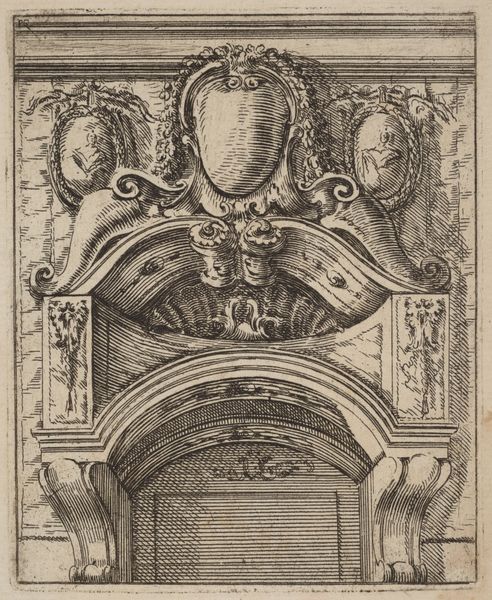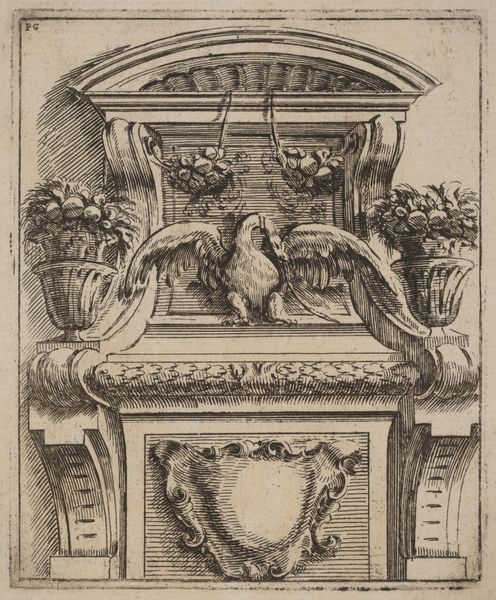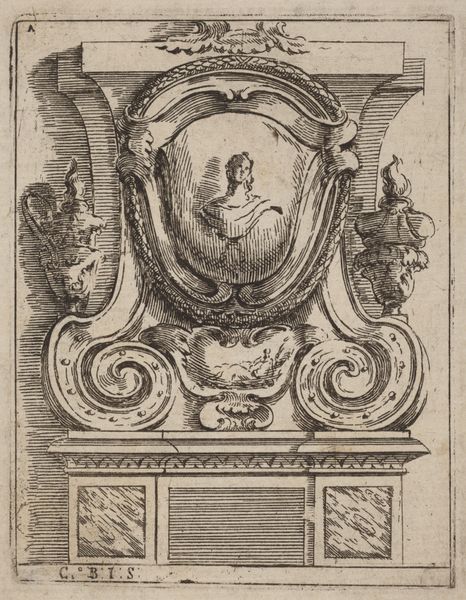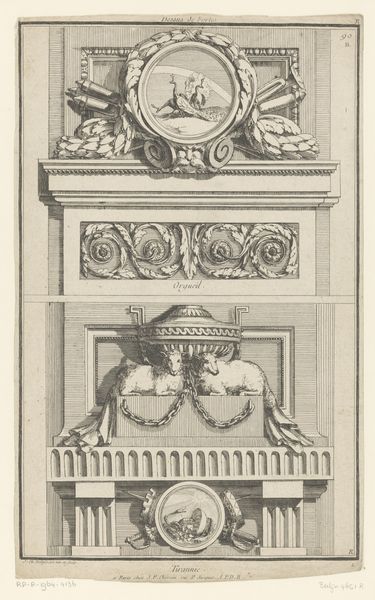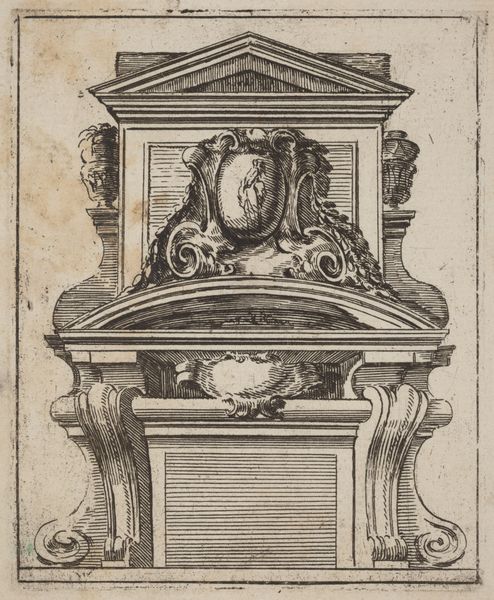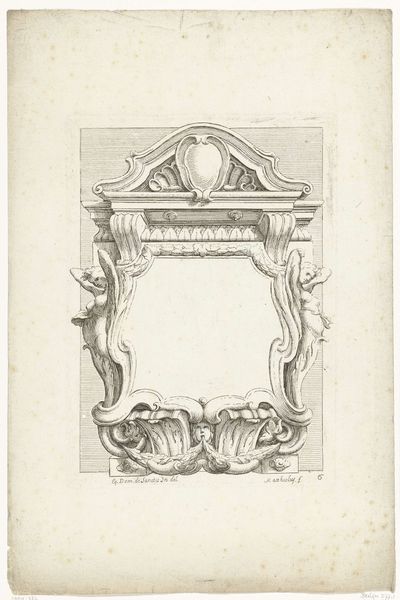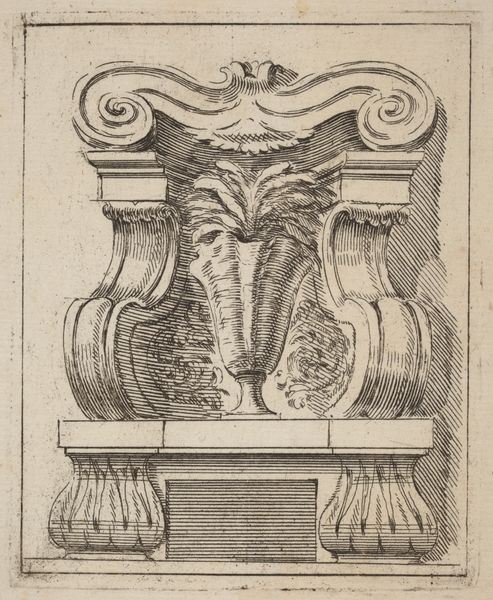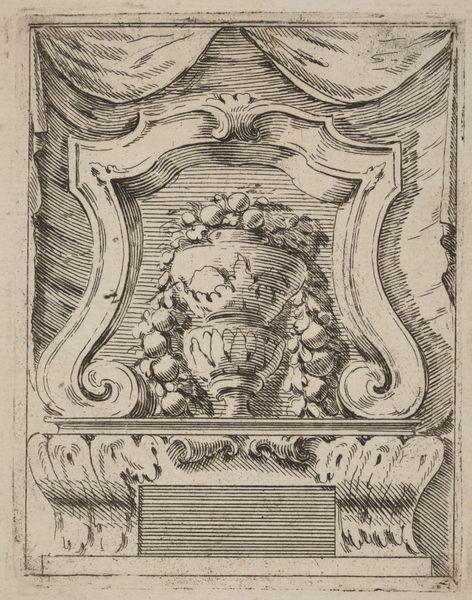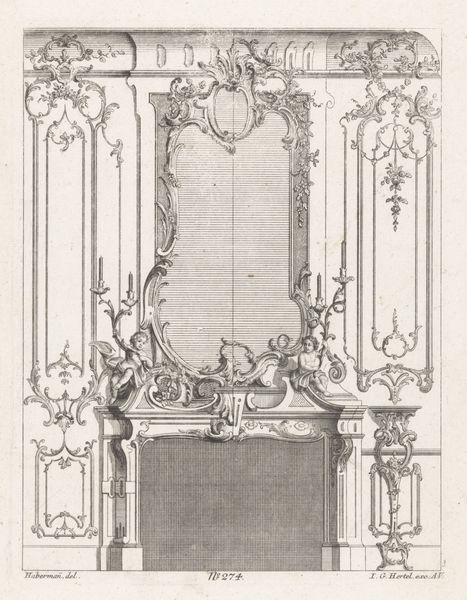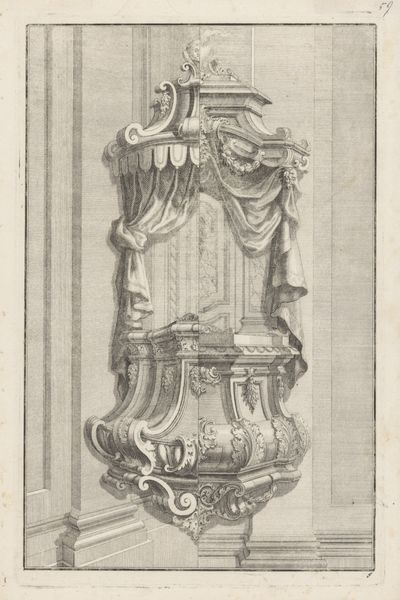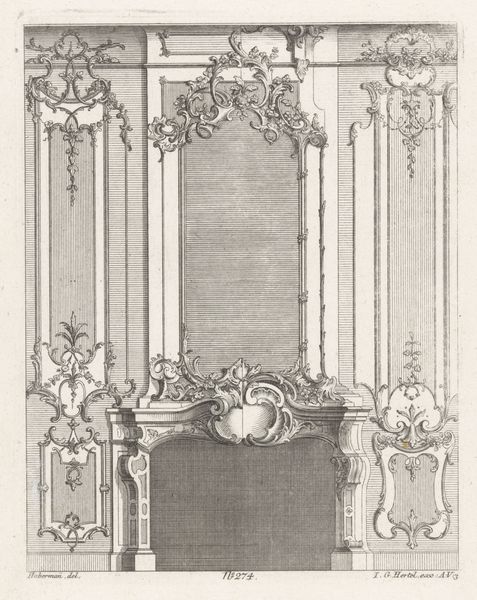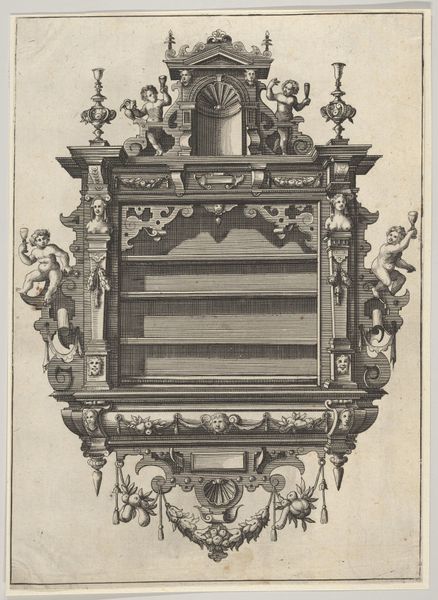
print, engraving, architecture
#
baroque
# print
#
geometric
#
engraving
#
architecture
Dimensions: plate: 11.3 x 9.3 cm (4 7/16 x 3 11/16 in.) sheet: 17.4 x 12.4 cm (6 7/8 x 4 7/8 in.)
Copyright: National Gallery of Art: CC0 1.0
Curator: Ah, this engraving pulls you in, doesn't it? It's "Architectural Motif with Three Shields" by Carlo Antonio Buffagnotti, dating back to around 1690. Editor: Immediately, I’m struck by how this geometric structure seems to float despite its formal symmetry, an unusual mix of austerity and frivolity. Like looking into an archive of past aspirations toward an unattainable ideal? Curator: Buffagnotti clearly delighted in Baroque extravagance, the elaborate curves and flourishes...almost like a dance. Editor: Right, but who did this supposed magnificence serve? What political, and even personal, power structures are symbolized in such deliberate visual language? Baroque wasn’t just visual play. It also served as a propaganda machine. These shields, these grand architectural gestures, feel like symbolic gatekeeping, warding off accessibility and alternative modes of visual expression. Curator: Mmm, you make me wonder what sort of space it was designed to adorn. Perhaps a wealthy patron's residence or even as plans for civic embellishment? Think about how prints such as these facilitated the dissemination of architectural ideas across Europe at the time. Each swirling line must have had its intention and some were very persuasive! Editor: Precisely, which makes me ponder, were ordinary people complicit in these representations of glory? Does the aesthetic overwhelm social inequality or make you oblivious to it? Consider for whom it became a source of pride to serve a sovereign with such "refined taste." What freedoms were stifled at the expense of celebrating such ostentatious power? Curator: Okay, wow... Heavy questions aside, what intrigues me about this particular piece is how contained yet bursting it feels. This almost rebellious refusal of pure functionalism—art for art's sake within architecture! Editor: Still, maybe understanding the rebellion allows one to dismantle the symbolic walls, paving the way for structures that invite everyone in, artistically and architecturally. Curator: True enough! I do think now, my immediate appreciation now has layers! Thanks for nudging my reflection. Editor: My pleasure! Let's use such explorations as pathways toward art that actively empowers.
Comments
No comments
Be the first to comment and join the conversation on the ultimate creative platform.
